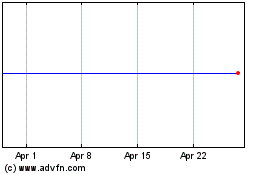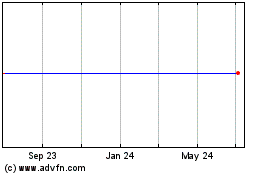Label update follows FDA analysis of
post-marketing LABA safety trials
AstraZeneca today announced the U.S. Food and Drug
Administration (FDA) has approved updates to the SYMBICORT®
(budesonide/formoterol fumarate dihydrate) Inhalation Aerosol
labeling, including removal of the Boxed WARNING for serious
asthma-related outcomes. SYMBICORT is a combination formulation
containing budesonide, an inhaled corticosteroid (ICS), and
formoterol, a long-acting beta2-adrenergic agonist (LABA)
bronchodilator in a single inhaler.
In 2011, to further evaluate the safety of LABAs when used in
combination with ICS for the treatment of asthma, the FDA required
the manufacturers of LABAs to conduct similar randomized,
double-blind, controlled clinical trials comparing the addition of
LABAs to ICS versus ICS alone. The required SYMBICORT study began
in late 2011.
The FDA analyzed a total of four clinical trials involving
41,297 patients. Three of the four trials included adults and
adolescents 12 years and older. One of the trials compared
fluticasone/salmeterol to fluticasone, one compared
mometasone/formoterol to mometasone, and one compared
budesonide/formoterol (SYMBICORT) to budesonide. The fourth trial
included pediatric patients 4-11 years and compared
fluticasone/salmeterol to fluticasone.
The results did not show a significant increase in risk of a
serious asthma-related event (hospitalization, intubations and
death) with ICS/LABA fixed-dose combination compared with ICS
alone. The trials did show that ICS/LABA combination medicines were
more effective in decreasing asthma attacks (e.g., the need to use
oral corticosteroids) compared to ICS alone. This additional
information has been added to the ICS/LABA labels.
The four studies supported the decision to remove the Boxed
WARNING for the ICS/LABA class. The labels of medicines that
contain both an ICS and LABA retain a Warning and Precaution
related to the increased risk of asthma-related death when LABAs
are used without an ICS to treat asthma.
The full FDA Safety Communication is available here.
The most common adverse reactions ≥3% reported in asthma pivotal
trials of SYMBICORT included nasopharyngitis, headache, upper
respiratory tract infection, pharyngolaryngeal pain, sinusitis,
pharyngitis, rhinitis, influenza, back pain, nasal congestion,
stomach discomfort, vomiting, and oral candidiasis.
Chris Blango, VP of US Medical Affairs, Respiratory, at
AstraZeneca, said: "This new labeling provides clinically relevant
information on the safety profile of ICS/LABAs including SYMBICORT
as a treatment option for people living with asthma, one of the
most common chronic respiratory diseases. This year, SYMBICORT
received two other label updates, in addition to this latest safety
data update, which underscores AstraZeneca’s commitment to
continually validate the well-established safety profile of
SYMBICORT and the importance of ICS/LABA combination therapy.”
In 2017, the FDA also approved the following label updates for
SYMBICORT:
- In January 2017, SYMBICORT 80/4.5 was
approved for the treatment of asthma in patients aged six up to 12
years. SYMBICORT 80/4.5 and 160/4.5 were already approved in the US
to treat asthma in patients 12 years and older.
- In September 2017, SYMBICORT160/4.5 was
approved for reducing exacerbations in patients with chronic
obstructive pulmonary disease (COPD). This adds to the previously
approved indication of maintenance treatment of airflow obstruction
in patients with COPD including chronic bronchitis and/or
emphysema.
SYMBICORT is NOT indicated for the relief of acute
bronchospasm.
Full study results from the SYMBICORT Inhalation Aerosol LABA
safety study were published in The New England Journal of Medicine
in September 2016.
IMPORTANT SAFETY INFORMATION
- Use of long-acting beta2-adrenergic
agonists (LABA) as monotherapy (without inhaled corticosteroids
[ICS]) for asthma is associated with an increased risk of
asthma-related death. Available data from controlled clinical
trials also suggest that use of LABA as monotherapy increases the
risk of asthma-related hospitalization in pediatric and adolescent
patients. These findings are considered a class effect of LABA.
When LABA are used in fixed dose combination with ICS, data from
large clinical trials do not show a significant increase in the
risk of serious asthma-related events (hospitalizations,
intubations, death) compared to ICS alone
- SYMBICORT is NOT a rescue medication
and does NOT replace fast-acting inhalers to treat acute
symptoms
- SYMBICORT should not be initiated in
patients during rapidly deteriorating episodes of asthma or
COPD
- Patients who are receiving SYMBICORT
should not use additional formoterol or other LABA for any
reason
- Localized infections of the mouth and
pharynx with Candida albicans has occurred in patients treated with
SYMBICORT. Patients should rinse the mouth after inhalation of
SYMBICORT
- Lower respiratory tract infections,
including pneumonia, have been reported following the
administration of ICS
- Due to possible immunosuppression,
potential worsening of infections could occur. A more serious or
even fatal course of chickenpox or measles can occur in susceptible
patients
- It is possible that systemic
corticosteroid effects such as hypercorticism and adrenal
suppression may occur, particularly at higher doses. Particular
care is needed for patients who are transferred from systemically
active corticosteroids to ICS. Deaths due to adrenal insufficiency
have occurred in asthmatic patients during and after transfer from
systemic corticosteroids to less systemically available ICS
- Caution should be exercised when
considering administration of SYMBICORT in patients on long-term
ketoconazole and other known potent CYP3A4 inhibitors
- As with other inhaled medications,
paradoxical bronchospasm may occur with SYMBICORT
- Immediate hypersensitivity reactions
may occur, as demonstrated by cases of urticaria, angioedema, rash,
and bronchospasm
- Excessive beta-adrenergic stimulation
has been associated with central nervous system and cardiovascular
effects. SYMBICORT should be used with caution in patients with
cardiovascular disorders, especially coronary insufficiency,
cardiac arrhythmias, and hypertension
- Long-term use of ICS may result in a
decrease in bone mineral density (BMD). Since patients with COPD
often have multiple risk factors for reduced BMD, assessment of BMD
is recommended prior to initiating SYMBICORT and periodically
thereafter
- ICS may result in a reduction in growth
velocity when administered to pediatric patients
- Glaucoma, increased intraocular
pressure, and cataracts have been reported following the
administration of ICS, including budesonide, a component of
SYMBICORT. Close monitoring is warranted in patients with a change
in vision or history of increased intraocular pressure, glaucoma,
or cataracts
- In rare cases, patients on ICS may
present with systemic eosinophilic conditions
- SYMBICORT should be used with caution
in patients with convulsive disorders, thyrotoxicosis, diabetes
mellitus, ketoacidosis, and in patients who are unusually
responsive to sympathomimetic amines
- Beta-adrenergic agonist medications may
produce hypokalemia and hyperglycemia in some patients
- The most common adverse reactions ≥3%
reported in asthma clinical trials included nasopharyngitis,
headache, upper respiratory tract infection, pharyngolaryngeal
pain, sinusitis, pharyngitis, rhinitis, influenza, back pain, nasal
congestion, stomach discomfort, vomiting, and oral candidiasis
- The most common adverse reactions ≥3%
reported in COPD clinical trials included nasopharyngitis, oral
candidiasis, bronchitis, sinusitis, and upper respiratory tract
infection
- SYMBICORT should be administered with
caution to patients being treated with MAO inhibitors or tricyclic
antidepressants, or within 2 weeks of discontinuation of such
agents
- Beta-blockers may not only block the
pulmonary effect of beta-agonists, such as formoterol, but may
produce severe bronchospasm in patients with asthma
- ECG changes and/or hypokalemia
associated with nonpotassium-sparing diuretics may worsen with
concomitant beta-agonists. Use caution with the coadministration of
SYMBICORT
INDICATIONS
SYMBICORT is indicated for the treatment of asthma in patients 6
years and older not adequately controlled on a long-term
asthma-control medication such as an ICS or whose disease warrants
initiation of treatment with both an ICS and LABA. (also see DOSAGE
AND ADMINISTRATION).
SYMBICORT 160/4.5 is indicated for the maintenance treatment of
airflow obstruction in patients with chronic obstructive pulmonary
disease (COPD), including chronic bronchitis and/or emphysema, and
to reduce COPD exacerbations.
SYMBICORT is NOT indicated for the relief of acute
bronchospasm.
Please see full Prescribing Information,
including Patient Information.
NOTES TO EDITORS
About Asthma
Asthma is one of the most common chronic respiratory diseases
and it affects the health and day-to-day lives of approximately 25
million individuals in the United States1. It is characterized
by recurrent breathlessness and wheezing, which vary in severity
and frequency from person to person.2,3
About SYMBICORT
SYMBICORT is a combination formulation containing budesonide, an
inhaled corticosteroid (ICS), and formoterol, a long-acting
beta2-adrenergic agonist bronchodilator (LABA), in a single
inhaler.
About AstraZeneca in Respiratory Disease
Respiratory disease is one of AstraZeneca’s main therapy areas,
and the Company has a growing portfolio of medicines that reached
more than 18 million patients in 2016. AstraZeneca’s aim is to
transform asthma and COPD treatment through inhaled combinations at
the core of care, biologics for the unmet needs of specific patient
populations, and scientific advancements in disease
modification.
The Company is building on a 40-year heritage in respiratory
disease and AstraZeneca’s capability in inhalation technology spans
both pMDIs and dry powder inhalers. AstraZeneca’s research is
focused on addressing underlying disease drivers focusing on the
lung epithelium, lung immunity and lung regeneration.
About AstraZeneca
AstraZeneca is a global, science-led biopharmaceutical company
that focuses on the discovery, development and commercialization of
prescription medicines, primarily for the treatment of diseases in
three therapy areas – Oncology, Cardiovascular & Metabolic
Diseases and Respiratory. The Company also is selectively active in
the areas of autoimmunity, neuroscience and infection. AstraZeneca
operates in over 100 countries and its innovative medicines are
used by millions of patients worldwide. For more information,
please visit www.astrazeneca-us.com and follow us on Twitter
@AstraZenecaUS.
References:
1. Centers for Disease Control and
Prevention. Asthma. Available at:
https://www.cdc.gov/nchs/fastats/asthma.htm. Last accessed December
2017.2. NHS Choices. Asthma: Overview. Available
at: http://www.nhs.uk/conditions/asthma/Pages/Introduction.aspx.
Last accessed December 2017.3. NHS Choices. Symptoms of asthma.
Available
at: http://www.nhs.uk/Conditions/Asthma/Pages/Symptoms.aspx.
Last accessed December 2017.
US-17086 Last Updated 12/17
View source
version on businesswire.com: http://www.businesswire.com/news/home/20171221005708/en/
AstraZenecaMichele Meixell, +1 302-885-2677orAbigail Bozarth, +1
302-885-2677
AstraZeneca (NYSE:AZN)
Historical Stock Chart
From Mar 2024 to Apr 2024

AstraZeneca (NYSE:AZN)
Historical Stock Chart
From Apr 2023 to Apr 2024
